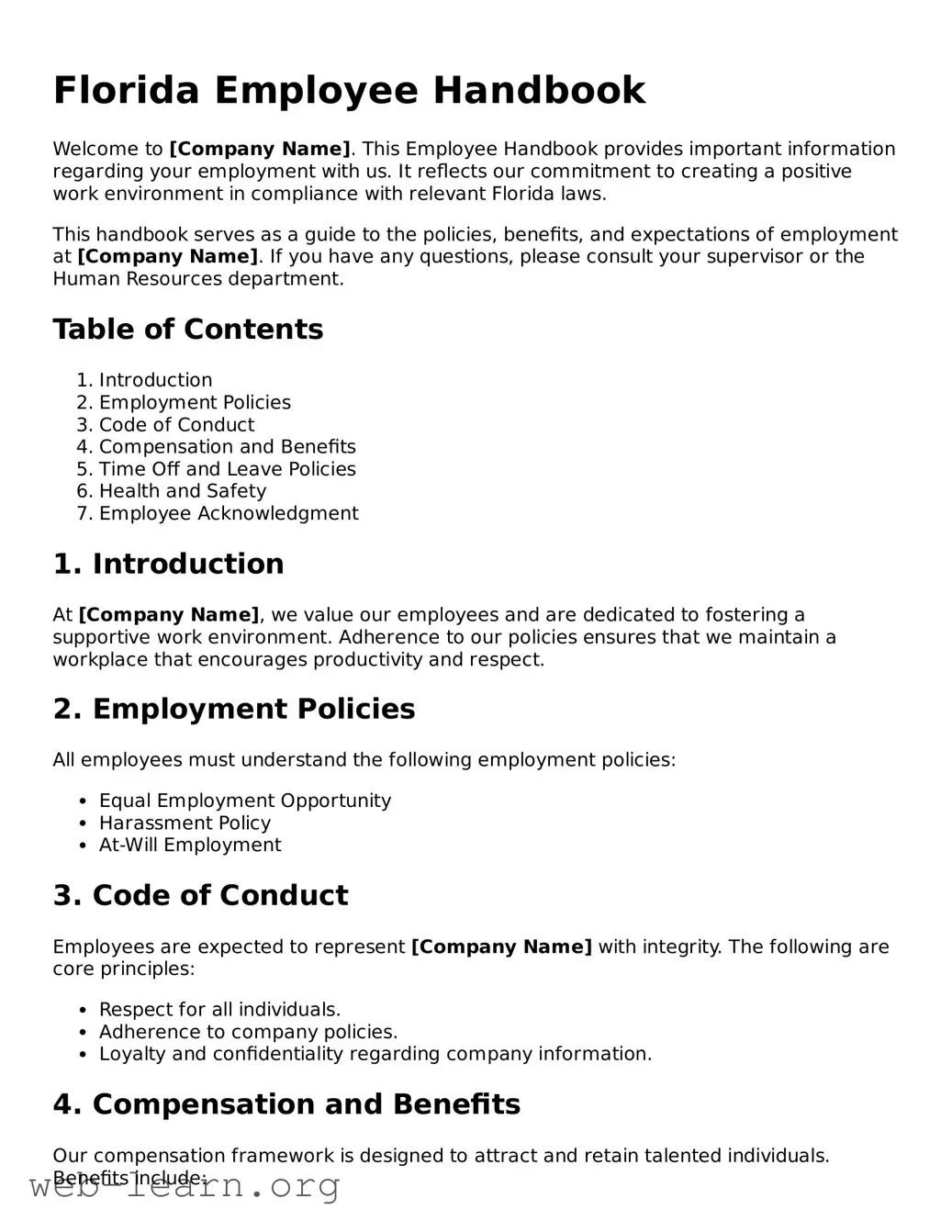Florida Employee Handbook
Welcome to [Company Name]. This Employee Handbook provides important information regarding your employment with us. It reflects our commitment to creating a positive work environment in compliance with relevant Florida laws.
This handbook serves as a guide to the policies, benefits, and expectations of employment at [Company Name]. If you have any questions, please consult your supervisor or the Human Resources department.
Table of Contents
- Introduction
- Employment Policies
- Code of Conduct
- Compensation and Benefits
- Time Off and Leave Policies
- Health and Safety
- Employee Acknowledgment
1. Introduction
At [Company Name], we value our employees and are dedicated to fostering a supportive work environment. Adherence to our policies ensures that we maintain a workplace that encourages productivity and respect.
2. Employment Policies
All employees must understand the following employment policies:
- Equal Employment Opportunity
- Harassment Policy
- At-Will Employment
3. Code of Conduct
Employees are expected to represent [Company Name] with integrity. The following are core principles:
- Respect for all individuals.
- Adherence to company policies.
- Loyalty and confidentiality regarding company information.
4. Compensation and Benefits
Our compensation framework is designed to attract and retain talented individuals. Benefits include:
- Health insurance options.
- Retirement plans.
- Paid time off and leave policies.
5. Time Off and Leave Policies
Employees are entitled to various types of leave. The following outlines important leave policies:
- Vacation Leave.
- Sick Leave.
- Family and Medical Leave.
6. Health and Safety
The safety and health of employees is a priority at [Company Name]. We strive to maintain a safe workplace. Employees are encouraged to report any hazards or unsafe behaviors.
7. Employee Acknowledgment
By signing below, you acknowledge that you have received and read the [Company Name] Employee Handbook. You agree to comply with the policies outlined herein.
Employee Name: ________________________
Date: ________________________
Thank you for being part of [Company Name]. Together, we create a thriving workplace.
